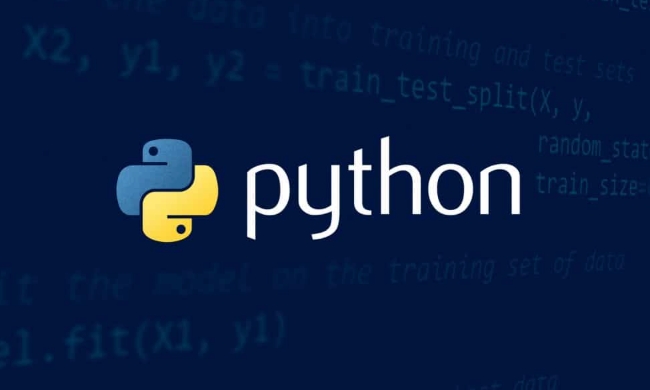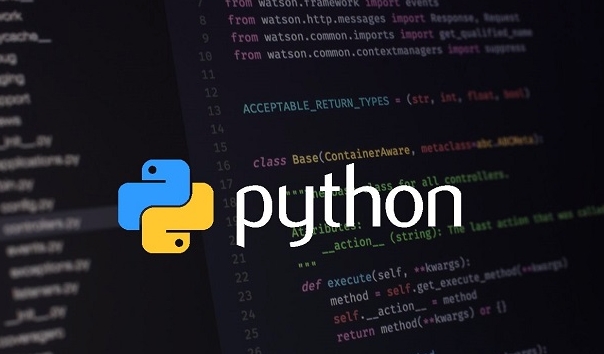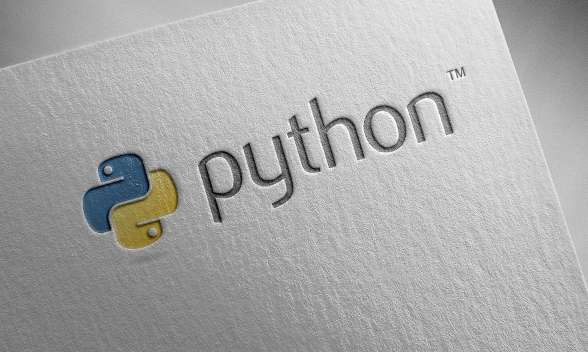 Backend Development
Backend Development
 Python Tutorial
Python Tutorial
 Differences Between Static Method and Class Method in Python
Differences Between Static Method and Class Method in Python
Differences Between Static Method and Class Method in Python
Jul 07, 2025 am 02:35 AMThe main differences between @staticmethod and @classmethod are parameter passing, usage scenarios and inheritance performance. 1. When passing parameters, the static method does not automatically pass any implicit parameters, but the class method automatically receives the class object as the first parameter (cls). 2. In usage scenarios, static methods are suitable for tool functions that are independent of classes and instances. Class methods are suitable for factory methods or situations where class state needs to be accessed/modified. 3. In inheritance, the static method is still bound to the class at the time of definition when invoking it, and the class method will be automatically bound to the subclass that calls it. When selecting, you should decide which decorator to use based on whether the class or instance is needed and whether it is used to create the instance.

In Python, @staticmethod and @classmethod are two commonly used decorators. They both can define methods in classes, but there are obvious differences in purpose and behavior. Simply put:

- Static method is more like an ordinary function, just used to organize code in a class, and it does not receive automatically passed
selforclsparameters. - Class Method will automatically receive the class itself as the first parameter (usually named
cls), which is suitable for factory methods or scenarios where class state needs to be accessed/modified.
Let’s take a look at the differences from several common usage perspectives.

1. Different parameters are passed
This is the most core difference between the two:
- Static method : No implicit parameters are automatically passed in.
- Class method : The first parameter is the class object (usually
cls).
For example:

class MyClass:
@staticmethod
def static_method(x):
print(f"Static method called with {x}")
@classmethod
def class_method(cls, x):
print(f"Class method called with {x}, class is {cls}")When called:
MyClass.static_method(5) # Output: Static method called with 5 MyClass.class_method(5) # Output: Class method called with 5, class is <class 'MyClass'>
It can be seen that the class method knows which class it belongs to, while the static method does not know this at all.
2. Use scenario comparison
Static method application situation:
- Methods do not need to access instance properties or class properties.
- It is just used to encapsulate a certain function and facilitate classification into a class.
- Such as tool functions, verification logic, format conversion, etc.
For example:
class Validator:
@staticmethod
def is_valid_email(email):
return "@" in email and "." in emailClass method application situation:
- An instance of the class needs to be created (factory method).
- The status of the class needs to be accessed or modified.
- Want to keep a reference to the current class while inheriting.
for example:
class Person:
instances = 0
@classmethod
def create(cls):
cls.instances = 1
return cls() In this way, no matter how the subclass changes, the create() method will return the correct class instance.
3. Performance differences in inheritance
When a child class inherits the parent class:
- Static method : It will not be bound to a subclass automatically, and the class defined is still used.
- Class method : will be automatically bound to the subclass that calls it.
Example:
class Base:
@staticmethod
def static():
print("Base static")
@classmethod
def klass(cls):
print(f"{cls.__name__} klass")
class Sub(Base):
pass
Sub.static() # Output: Base static
Sub.klass() # Output: Sub klassAs you can see, the class method changes behavior according to the actual caller, while the static method is fixed.
Basically these differences. Although it looks similar, choosing the wrong decorator may cause unexpected problems when designing a class structure or doing framework development.
Let's briefly summarize:
- If the method does not need to access the instance or class, use
@staticmethod - If the method needs to access the class itself, or use it to create an instance, use
@classmethod
It is not complicated but it is easy to ignore details. Pay attention to choosing according to actual needs.
The above is the detailed content of Differences Between Static Method and Class Method in Python. For more information, please follow other related articles on the PHP Chinese website!

Hot AI Tools

Undress AI Tool
Undress images for free

Undresser.AI Undress
AI-powered app for creating realistic nude photos

AI Clothes Remover
Online AI tool for removing clothes from photos.

Clothoff.io
AI clothes remover

Video Face Swap
Swap faces in any video effortlessly with our completely free AI face swap tool!

Hot Article

Hot Tools

Notepad++7.3.1
Easy-to-use and free code editor

SublimeText3 Chinese version
Chinese version, very easy to use

Zend Studio 13.0.1
Powerful PHP integrated development environment

Dreamweaver CS6
Visual web development tools

SublimeText3 Mac version
God-level code editing software (SublimeText3)
 Polymorphism in python classes
Jul 05, 2025 am 02:58 AM
Polymorphism in python classes
Jul 05, 2025 am 02:58 AM
Polymorphism is a core concept in Python object-oriented programming, referring to "one interface, multiple implementations", allowing for unified processing of different types of objects. 1. Polymorphism is implemented through method rewriting. Subclasses can redefine parent class methods. For example, the spoke() method of Animal class has different implementations in Dog and Cat subclasses. 2. The practical uses of polymorphism include simplifying the code structure and enhancing scalability, such as calling the draw() method uniformly in the graphical drawing program, or handling the common behavior of different characters in game development. 3. Python implementation polymorphism needs to satisfy: the parent class defines a method, and the child class overrides the method, but does not require inheritance of the same parent class. As long as the object implements the same method, this is called the "duck type". 4. Things to note include the maintenance
 Explain Python generators and iterators.
Jul 05, 2025 am 02:55 AM
Explain Python generators and iterators.
Jul 05, 2025 am 02:55 AM
Iterators are objects that implement __iter__() and __next__() methods. The generator is a simplified version of iterators, which automatically implement these methods through the yield keyword. 1. The iterator returns an element every time he calls next() and throws a StopIteration exception when there are no more elements. 2. The generator uses function definition to generate data on demand, saving memory and supporting infinite sequences. 3. Use iterators when processing existing sets, use a generator when dynamically generating big data or lazy evaluation, such as loading line by line when reading large files. Note: Iterable objects such as lists are not iterators. They need to be recreated after the iterator reaches its end, and the generator can only traverse it once.
 How to handle API authentication in Python
Jul 13, 2025 am 02:22 AM
How to handle API authentication in Python
Jul 13, 2025 am 02:22 AM
The key to dealing with API authentication is to understand and use the authentication method correctly. 1. APIKey is the simplest authentication method, usually placed in the request header or URL parameters; 2. BasicAuth uses username and password for Base64 encoding transmission, which is suitable for internal systems; 3. OAuth2 needs to obtain the token first through client_id and client_secret, and then bring the BearerToken in the request header; 4. In order to deal with the token expiration, the token management class can be encapsulated and automatically refreshed the token; in short, selecting the appropriate method according to the document and safely storing the key information is the key.
 Explain Python assertions.
Jul 07, 2025 am 12:14 AM
Explain Python assertions.
Jul 07, 2025 am 12:14 AM
Assert is an assertion tool used in Python for debugging, and throws an AssertionError when the condition is not met. Its syntax is assert condition plus optional error information, which is suitable for internal logic verification such as parameter checking, status confirmation, etc., but cannot be used for security or user input checking, and should be used in conjunction with clear prompt information. It is only available for auxiliary debugging in the development stage rather than substituting exception handling.
 How to iterate over two lists at once Python
Jul 09, 2025 am 01:13 AM
How to iterate over two lists at once Python
Jul 09, 2025 am 01:13 AM
A common method to traverse two lists simultaneously in Python is to use the zip() function, which will pair multiple lists in order and be the shortest; if the list length is inconsistent, you can use itertools.zip_longest() to be the longest and fill in the missing values; combined with enumerate(), you can get the index at the same time. 1.zip() is concise and practical, suitable for paired data iteration; 2.zip_longest() can fill in the default value when dealing with inconsistent lengths; 3.enumerate(zip()) can obtain indexes during traversal, meeting the needs of a variety of complex scenarios.
 What are python iterators?
Jul 08, 2025 am 02:56 AM
What are python iterators?
Jul 08, 2025 am 02:56 AM
InPython,iteratorsareobjectsthatallowloopingthroughcollectionsbyimplementing__iter__()and__next__().1)Iteratorsworkviatheiteratorprotocol,using__iter__()toreturntheiteratorand__next__()toretrievethenextitemuntilStopIterationisraised.2)Aniterable(like
 What are Python type hints?
Jul 07, 2025 am 02:55 AM
What are Python type hints?
Jul 07, 2025 am 02:55 AM
TypehintsinPythonsolvetheproblemofambiguityandpotentialbugsindynamicallytypedcodebyallowingdeveloperstospecifyexpectedtypes.Theyenhancereadability,enableearlybugdetection,andimprovetoolingsupport.Typehintsareaddedusingacolon(:)forvariablesandparamete
 Python FastAPI tutorial
Jul 12, 2025 am 02:42 AM
Python FastAPI tutorial
Jul 12, 2025 am 02:42 AM
To create modern and efficient APIs using Python, FastAPI is recommended; it is based on standard Python type prompts and can automatically generate documents, with excellent performance. After installing FastAPI and ASGI server uvicorn, you can write interface code. By defining routes, writing processing functions, and returning data, APIs can be quickly built. FastAPI supports a variety of HTTP methods and provides automatically generated SwaggerUI and ReDoc documentation systems. URL parameters can be captured through path definition, while query parameters can be implemented by setting default values ??for function parameters. The rational use of Pydantic models can help improve development efficiency and accuracy.





